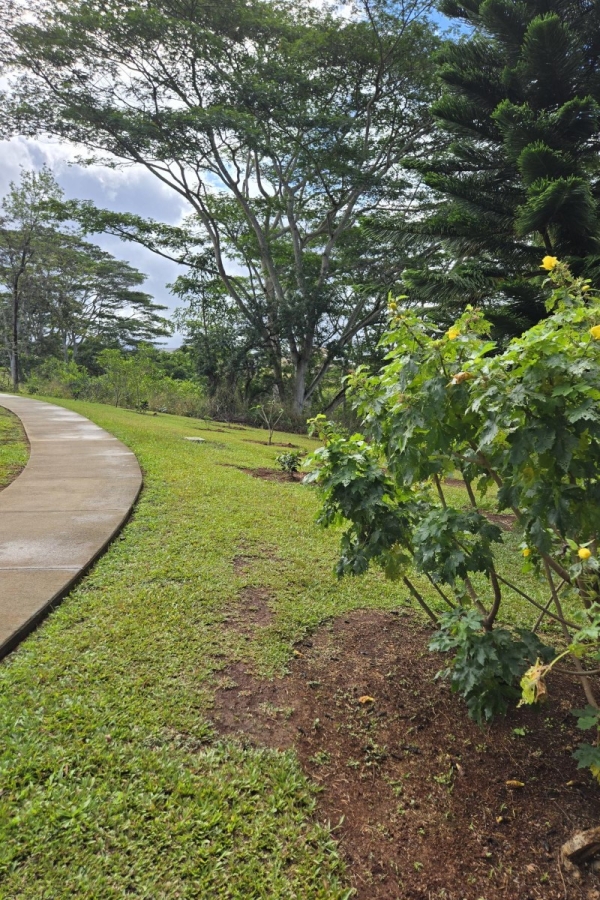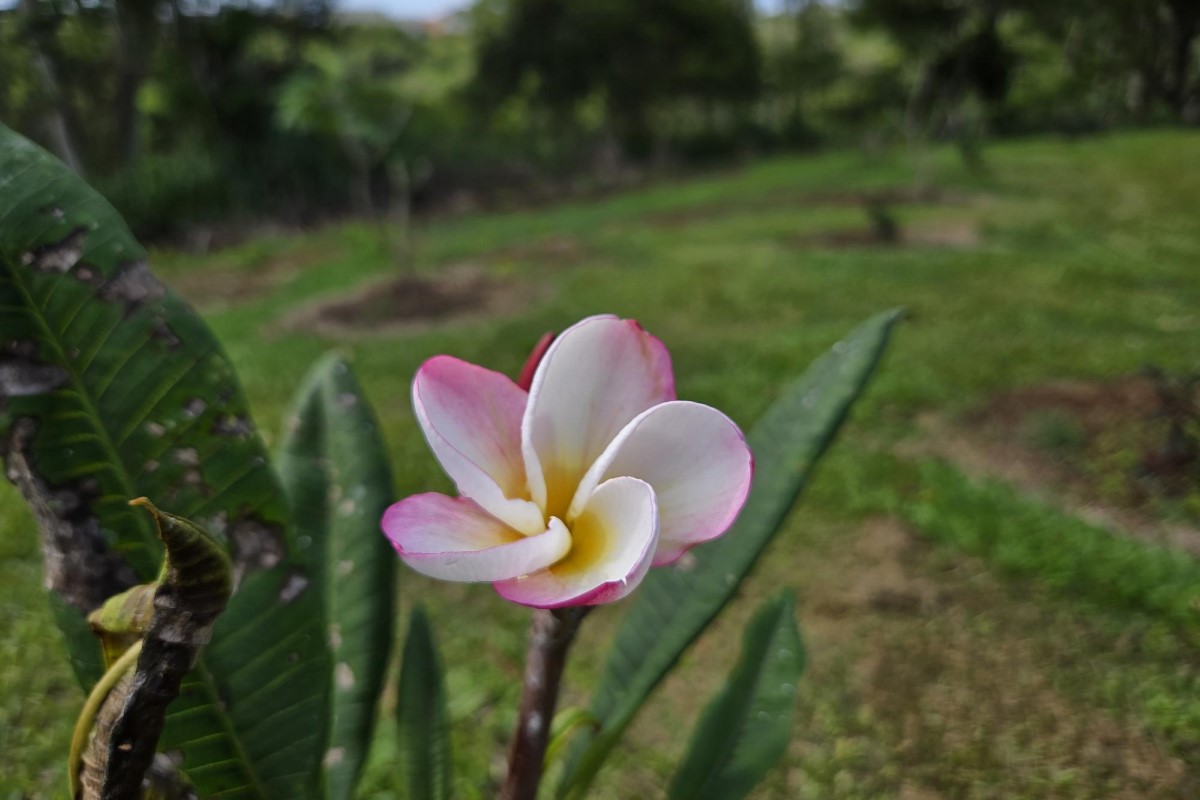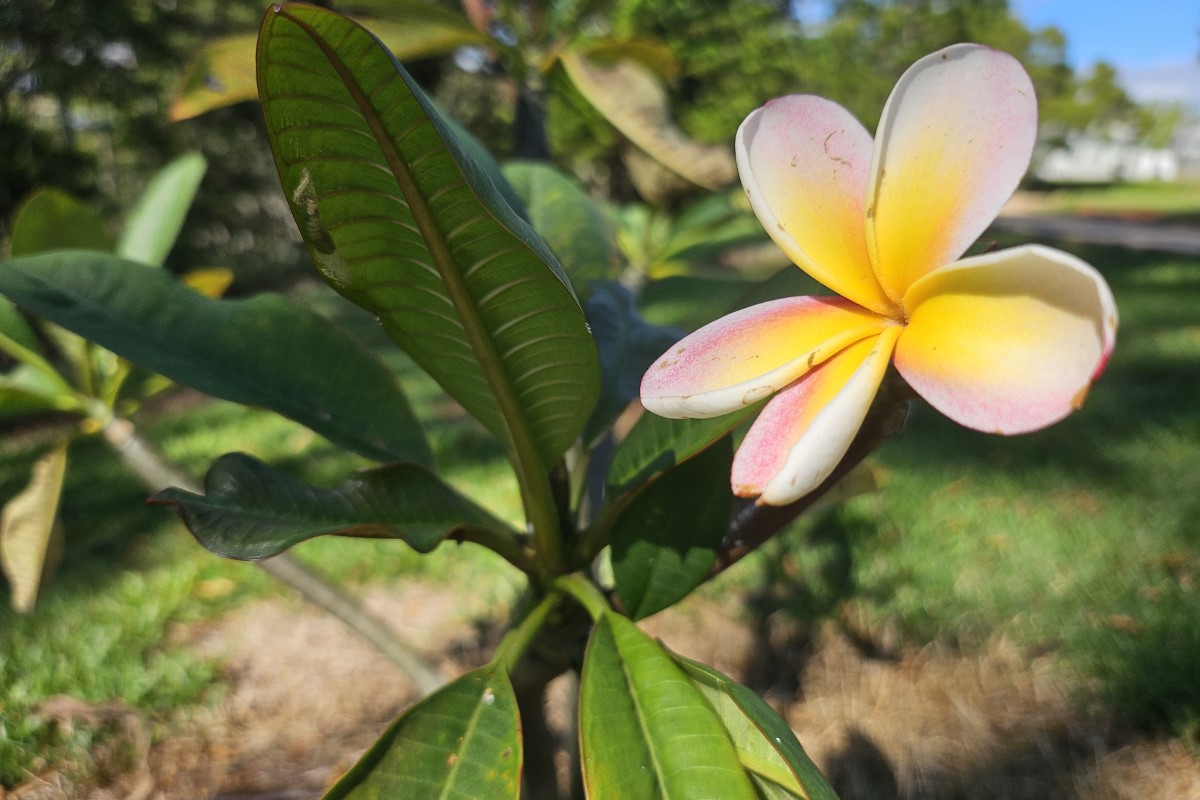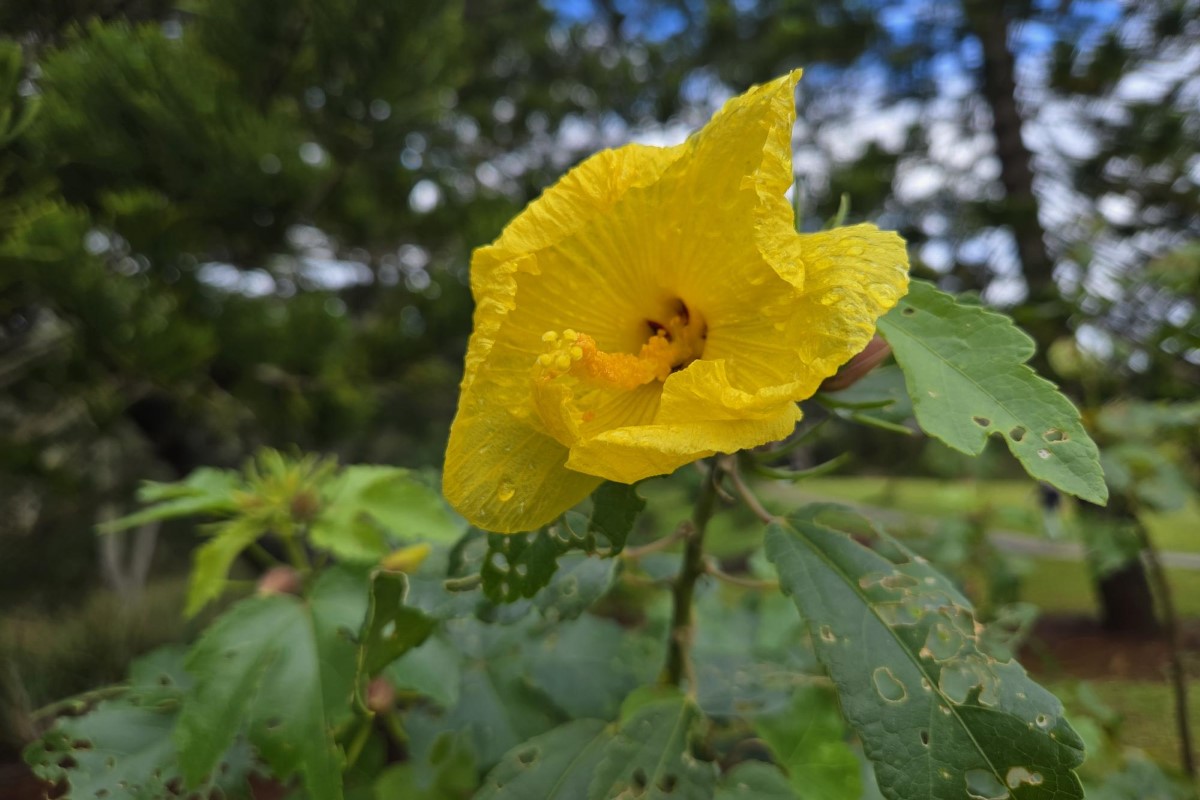Nature Walk – Zone 6
Hawaii’s native flora is as unique as it is diverse, with approximately 1,400 vascular plant taxa native to the islands, and nearly 90% of these are found nowhere else in the world. The rich tapestry of plants includes the native Akia plant, the Pohinahina, used medicinally by native Hawaiians, and the Kupukupu fern used in traditional Hula, are just a few examples of the islands’ botanical treasures. Conservation efforts are crucial to protect these species from threats such as habitat loss, invasive species, and climate change. Initiatives include surveying historic ranges, augmenting wild populations, and establishing new ones in safe harbors. The MTA Nature Walk was developed to highlight these plant species and other important fauna of Hawaiian culture and landscapes.
Zone 6 Plants
Plumeria
Hawaiian Name: Melia
Scientific Name: Plumeria (Genus)
Common Name: Plumeria
The Plumeria, with its vibrant blossoms and sweet fragrance, holds a cherished place in Hawaiian culture, despite not being native to the islands. Introduced in 1860 by Dr. William Hillebrand, a German physician and botanist, the Plumeria flourished in Hawaii’s warm climate and volcanic soil.
Known locally as Melia, this plant is deeply rooted in Hawaiian traditions. It is often used in leis and represents positivity and hospitality. The Plumeria’s remarkable adaptability allows it to thrive from sea level to elevations of 2,000 feet and even grow in colder climates when brought indoors during winter.
With thousands of varieties now cultivated, the Plumeria remains a celebrated symbol of Hawaii’s identity, beloved for its ability to evoke the aloha spirit and add vibrant beauty to any landscape.
Mao Hau Hele
Hawaiian Name: Māo Hau Hele
Scientific Name: Hibiscus brackenridgei
Common Name: Hawaiian State Flower
The Māo Hau Hele, Hawaii’s state flower, is a vibrant yellow hibiscus that symbolizes the islands’ unique flora. Endemic to Hawaii, it is found nowhere else in the world. The plant thrives in dry landscapes with full sun exposure, particularly at elevations between 400 and 2,400 feet, and can grow up to 10 feet tall.
Culturally significant to Native Hawaiians, this species was historically used to produce a blue-gray dye for kapa cloth. Despite its remarkable beauty, the Māo Hau Hele is classified as endangered, threatened by habitat loss and other environmental pressures.
Efforts to conserve and protect this valuable species are essential for preserving Hawaii’s natural heritage and biodiversity.



